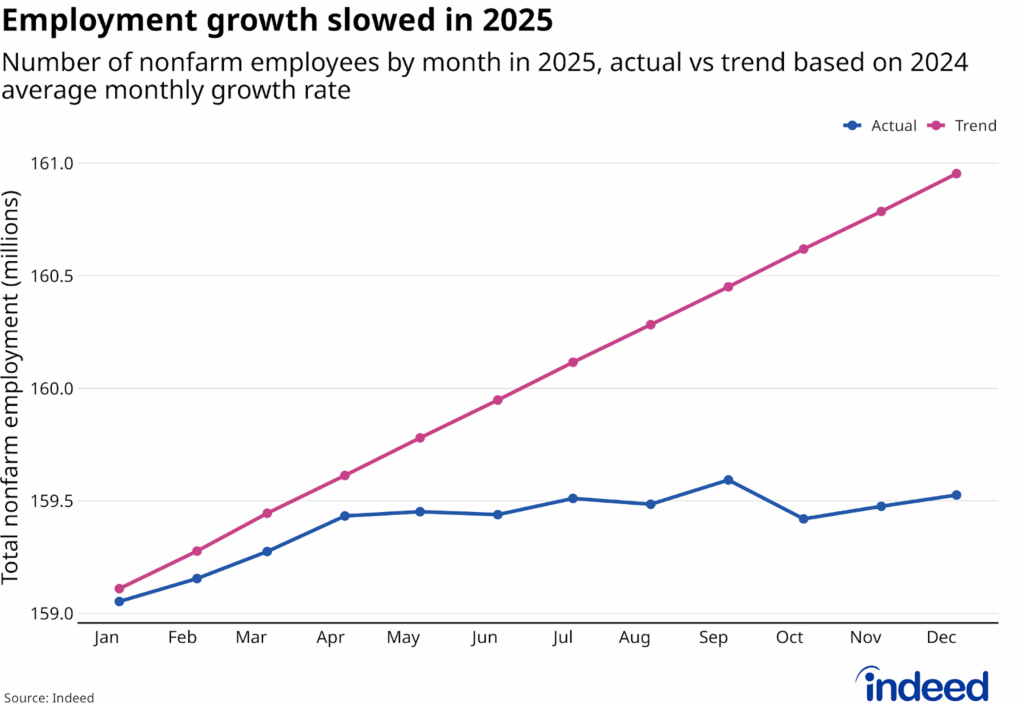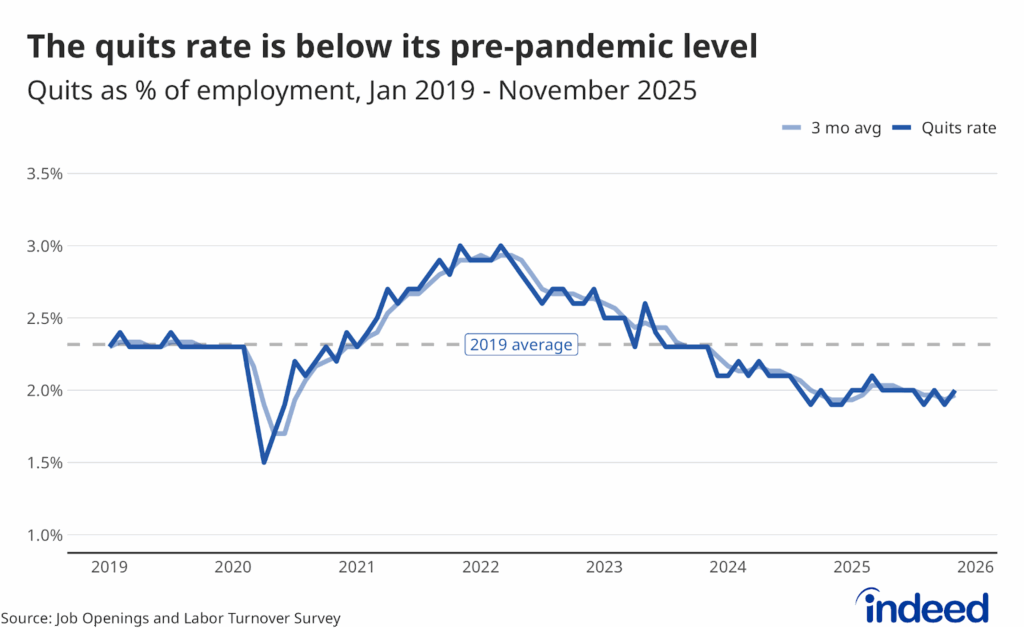A decade ago, the global financial crisis shook labor markets around the world. Since 2014, as the global economy has slowly returned to health, the labor markets of different countries have followed broadly similar, yet still distinct, paths.
We took a look at four major economies: the US, Canada, the UK, and Australia. In all of them, labor markets have improved over the past five years. Indeed job posting and resume data allow us to investigate how the distribution of job listings has changed over time in these markets—and how well job seekers are keeping up.
Key Points:
- With improving labor markets, smaller overall talent pools are the challenge for employers, not poor matches between job seekers and available positions.
- Overall, new job opportunities are changing at a similar pace across countries.
- The mix of tech job postings is evolving slowest in the US.
- Tighter labor markets are associated with lower mismatch between job seekers and the types of positions employers are trying to fill.
Across countries, job postings are changing at a similar pace, but tech slowest in the US
The US, Canada, the UK, and Australia have broadly similar labor markets and these markets appear to be evolving at a similar pace. In all four countries, the types of job postings have changed rapidly since the beginning of 2014. (See methodology notes below.) In each country, over 20% of job postings would have to change in 2018 to make the mix look as it did in 2014.
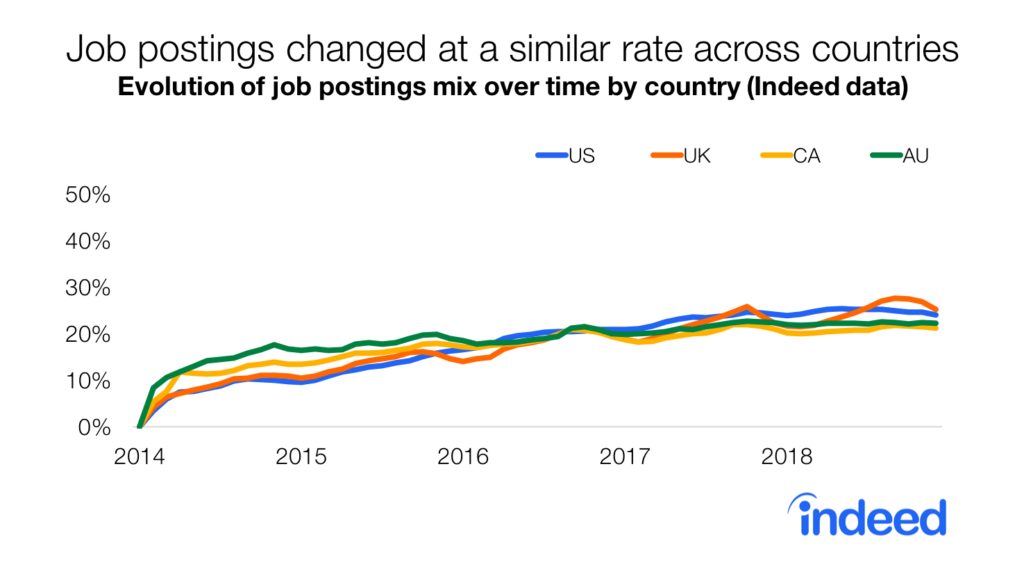
However, when we zoom in on the ever-of-interest tech sector, the US—considered to be a global tech leader—has actually seen the least amount of change in the mix of tech job postings over the past five years.
This could be because the other three countries are experiencing more change as they catch up with the tech leader. Alternatively, they may be innovating in their own directions. Tech job postings are changing fastest in Australia, followed by a neck-and-neck competition between the UK and Canada.
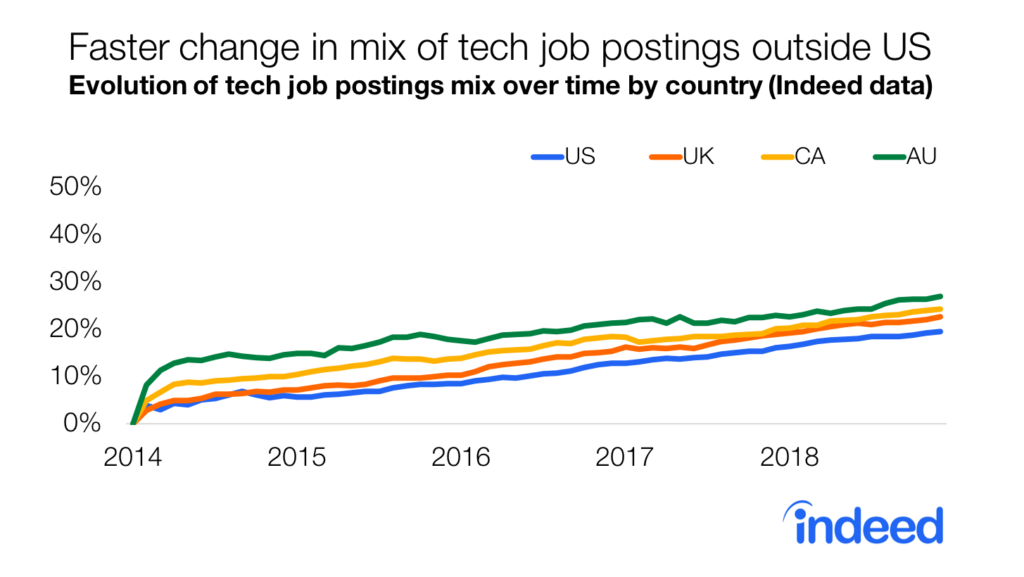
How well are employers and job seekers matched around the world?
As the job market is transformed, some worry about a possible disconnect between job seeker backgrounds and the positions employers are trying to fill. Mismatch between employers and job seekers is measured by comparing the distribution of job seekers with the distribution of job openings. In a labor market with a high level of mismatch, the qualifications of job seekers often differ from those needed for available job openings. Thus, if mismatch is 30%, then 30% of the resumes of active job seekers would need to have different job titles from their current or most recent employment to line up with the distribution of job postings.
Mismatch in the four countries ranges from 27% to 53%. Overall since 2014, the trend is flat to declining. The lower levels of mismatch over this period appear largely to reflect improvements in the unemployment rate. The UK has registered the most dramatic mismatch decrease since 2014, and it has also seen substantial improvement in its unemployment rate over the past several years. Australia’s mismatch was barely lower in 2018 than in 2014, and it saw a smaller decline in unemployment than the other countries in our sample. This suggests that something about a tight labor market tends to reduce mismatch between job seekers and employers.
The reason an improving job market lowers mismatch may be that workers in fields that previously lost jobs now can find employment opportunities in their chosen occupation. For instance, in the US recession of a decade ago, many construction workers became unemployed. As a result, employers in other sectors, such as retail, had applicant pools that included construction workers, and those job seekers might not have been the best fit for those positions. Now though, as the economy has strengthened, more positions are available that match up with these previously mismatched workers. Thus, more construction jobs are now getting posted, and these fit well with the skill sets of all those once-jobless carpenters, plumbers, and electricians.
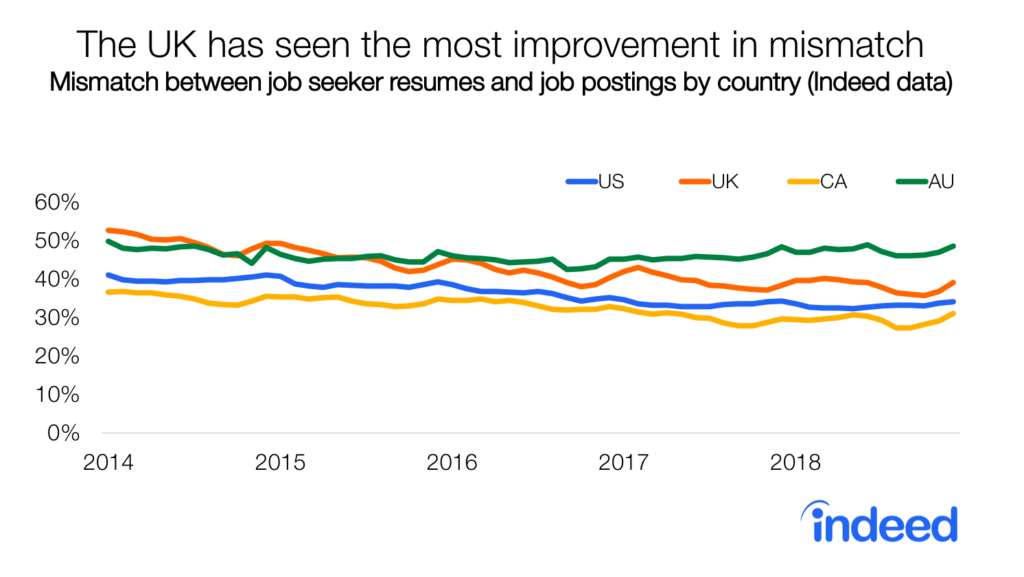
Importantly, these declines in mismatch don’t mean it is becoming easier for employers to find workers. In a tight labor market, employers see relatively few candidates compared with the number of jobs available. All that declining mismatch indicates is that the candidates employers are seeing are better suited for posted jobs than applicants were a few years ago.
Overall, it’s hard to find workers when unemployment is so low. And that’s particularly true for roles that are chronically tough to fill, such as some nursing or tech positions. But when hiring is so competitive, the challenge of finding workers isn’t confined to those tough-to-fill roles.
A strong labor market helps reduce mismatch between job seekers and employers
As the labor market has tightened in these four countries, the types of jobs posted have evolved rapidly in all of them. But comparing the UK, the country that stands out for its substantial drop in the mismatch between job seekers and employers, and Australia, which has seen little change, the key difference seems to be the overall tightness of the labor market. The UK has seen substantial improvement in its unemployment rate and Australia has much less.
That suggests that the way countries can achieve a better match between job seekers and employers is to put in place policies that strengthen the economy as a whole. Skills training and labor market coaching can help job seekers get the skills employers need. But strong economic growth and a healthy labor market solve a myriad of ills.
Methodology
To quantify mismatch, we looked at job seeker resumes to compare job titles from their current or most recent employment with the titles of Indeed job postings. We analyzed aggregated and anonymized data on job openings and resumes posted on Indeed between January 2014 and December 2018 in the US, the UK, Canada, and Australia. The data are organized as monthly job posting and resume shares mapped to one of 6060 normalized titles. Employers use tens of thousands of job title variations to describe roles, so we normalize them by grouping together titles with slight variations. We did not include resumes or job postings if the job title did not map to a normalized title. A standard dissimilarity index was used to measure mismatch and jobs mix change. For further details, see our previous post on US mismatch from September of 2018 and the associated methodology materials.


